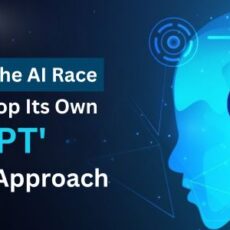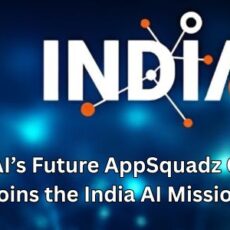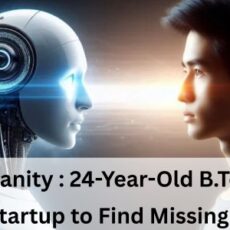Introduction
India is set to develop its own generative AI model, joining the ranks of global players like OpenAI’s ChatGPT Google’s Gemini, and China’s DeepSeek. The initiative, announced by Union IT Minister Ashwini Vaishnav at the Utkarsh Odisha Conclave, will be powered by the India AI Compute Facility, which has secured 18,693 GPUs to drive the development of a Large Language Model (LLM) tailored specifically for India. GetMyIndia.com
What is Artificial Intelligence (AI)?
Artificial Intelligence (AI) refers to the development of computer systems of perform tasks that require human intelligence. AI aids in processing large amounts of data, identifying patterns, and making decisions based on the collected information. This can be achieved through techniques like Machine Learning, Natural Language Processing, Computer Vision, and Robotics. AI encompasses a range of abilities, including learning, reasoning, perception, problem solving, data analysis, and language comprehension. The ultimate goal of AI is to create machines that can emulate capabilities and carry out diverse tasks, with enhanced efficiency and precision. The field of AI holds the potential to revolutionize aspects of our daily lives.
How Does AI Work?
Artificial Intelligence (AI) uses a wide range of techniques and approaches that enable machines to simulate human-like intelligence and perform tasks that traditionally require human assistance. AI systems work through a combination of algorithms, data, and computational power.
Here’s an overview of how AI Works :
- Data Collection & Data Pre-processing: Data can be collected from various sources, including sensors, digital devices, databases, the internet, and user interactions. The quality and quantity of data are crucial for training accurate and reliable AI models. Once data is collected, it needs to be pre-processed to ensure it’s clean, structured, and suitable for analysis. This pre-processing stage may involve tasks such as cleaning noisy data, handling missing values, standardizing formats, and encoding categorical variables.
- Algorithm Selection: Different algorithms are suited for different types of tasks, such as classification, regression, clustering, and pattern recognition. Common AI algorithms include neural networks, decision trees, support vector machines, and k-nearest neighbours.
- Model Training & Model Evaluation: In the training phase, AI models are fed with labelled data (supervised learning) or unlabelled data (unsupervised learning) to learn patterns and relationships. This process involves optimization techniques like gradient descent and back propagation in neural networks. After training, the AI model is evaluated using separate validation data to assess its performance and generalization ability. Performance metrics such as accuracy, precision, recall, F1-score, and area under the curve (AUC) are used to quantify the model’s effectiveness in making predictions or decisions.
- Model Deployment: Once the AI model meets the desired performance criteria, it can be deployed into production environments to perform real-world tasks. Deployment involves integrating the model into existing systems, such as mobile apps, web services, or embedded devices, to provide AI-driven functionalities.
- Continuous Learning and Improvement: AI systems can adapt and improve over time through continuous learning. They can be updated with new data and retrained periodically to stay relevant and accurate in dynamic environments. Techniques like online learning, transfer learning, and reinforcement learning enable AI models to learn from new experiences and feedback.
- Inference and Decision-Making: During inference, the trained AI model applies its learned knowledge to make predictions or decisions on new, unseen data. Inference involves feeding input data into the model and obtaining output predictions or classifications based on the model’s learned patterns and representations.
Overall, AI systems work by leveraging data, algorithms, and computational power to learn from experience, make decisions, and perform tasks autonomously. The specific workings of an AI system depend on its architecture, algorithms, and the nature of the tasks it’s designed to accomplish.
Should India create its own AI Model?
Chinese company DeepSeek created ripples when its AI model R1 overtook ChatGPT as the top-ranked free app on Apple’s App Store. Built with $5.6 million, a fraction of the cost of other models like OpenAI, the model’s popularity has challenged the AI dominance of US-based companies and even led to billions being shaved off Nvidia’s market cap.
OpenAI’s chief, Sam Altman, said that while R1 was an impressive model at the price it was offered, his own company delivered much better models. He had earlier dismissed India’s attempt to create competing AI models with a $10 million budget. For perspective, a report by The Independent said that OpenAI spends $700,000 per day on keeping its public chatbot, ChatGPT, simply running—that’s over $250 million per year just on the running cost of a free app.
According to Vaishnav, India is not late in creating its own AI model. He said the decision was not in response to potential impact from DeepSeek, but rather the availability of compute power at super low costs that India will be able to offer.
How Many GPUs will be Available?
More than 19,000 GPUs will be available
According to the government’s plan, the target was initially set at 10,000 GPUs, but the Common Facility has so far acquired 19,000 GPUs. These include 12,896 Nvidia H100 GPUs and 1,480 Nvidia H200 GPUs. All of these are cutting-edge AI chips, which have one of the most powerful computing capabilities in the world. Currently, 10,000 GPUs are ready for immediate use, while the rest will be deployed gradually. Vaishnav has confirmed that the facility will soon be available to all users.
AI applications for Agriculture, Climate change, and Education
India wants to use AI to solve major issues related to society. Vaishnav said that 18 AI-based applications have been approved in the first phase. These applications will mainly work in three areas.
- Agriculture
- Climate Change
- Learning Disabilities
New institution for AI safety
The government will also set up an AI Safety Institution to ensure safe and responsible use of AI technology. Unlike other countries, where AI regulatory bodies work under a single institution, India will adopt a hub-and-spoke model. Under this, several institutions will jointly develop security tools and frameworks.
Conclusion
AI model is ready to become a future healthcare leader with its patient interaction, tailored treatment, personalized discussions, and Agriculture, Climate change, and education. India has a tremendous opportunity to benefit from a strategic push for AI. The 2025 Budget could unlock a multitude of possibilities—not just for India’s tech ecosystem, but for the entire economy. With the right investments, collaborations, and ethical frameworks, India can position itself as a global leader in AI while driving economic and social progress.
GMICapitals.com RaysVeda.com GetMyStartup.com LawCanal.com ABHAYRAY.COM ZinCob.com




